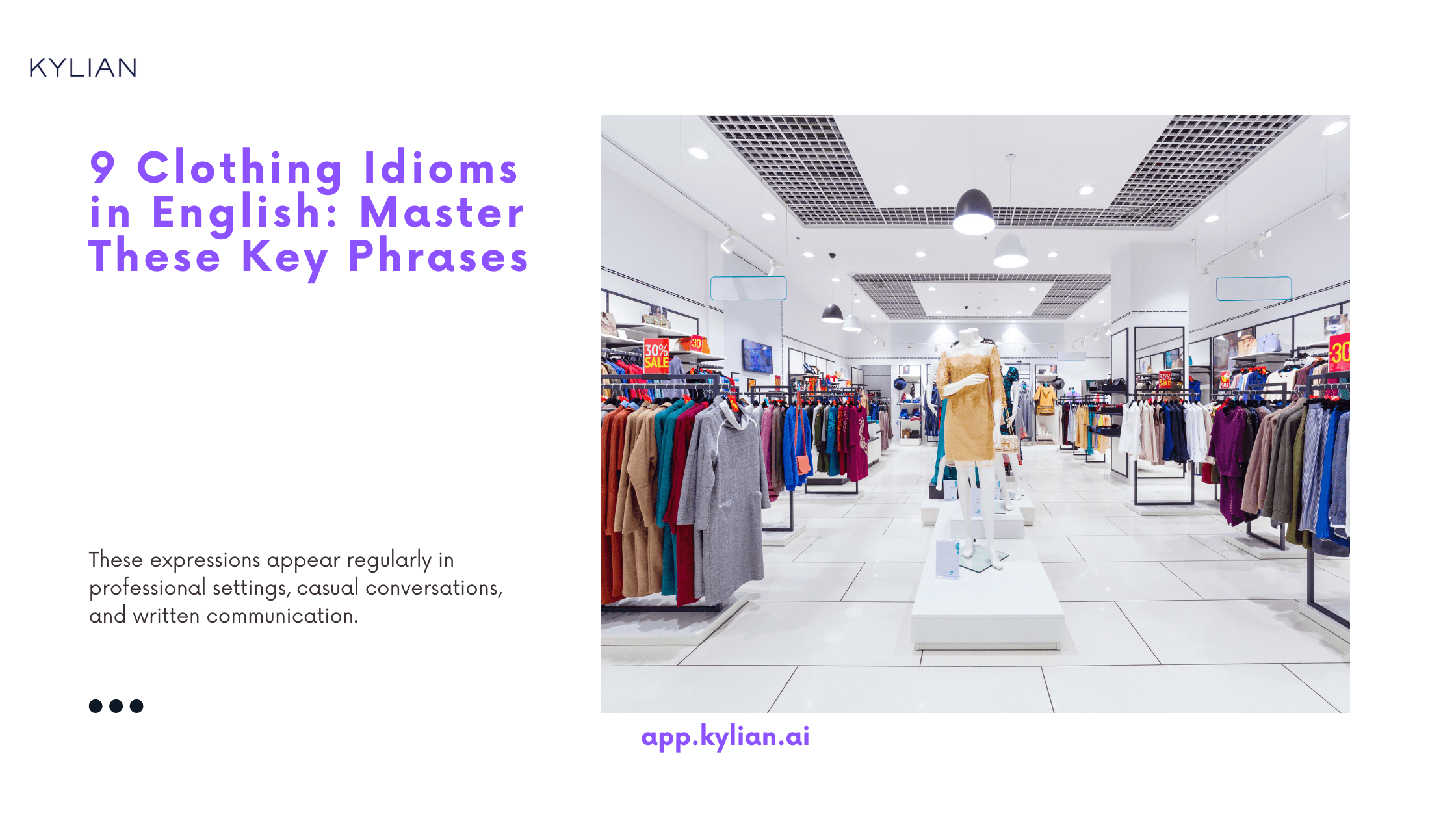

"Ja Mata" vs "Mata Ne": Key Differences in Japanese
Understanding the nuanced differences between "ja mata" (じゃあまた) and "mata ne" (またね) reveals critical insights into Japanese social dynamics and linguistic precision. These farewell expressions, while superficially similar, operate within distinct contextual frameworks that native speakers navigate instinctively. The core distinction lies not in their literal translations—both essentially mean "see you later"—but in their pragmatic applications within Japanese social hierarchies and relationship contexts. This differentiation matters because misusing these expressions can signal cultural misunderstanding or inappropriate social positioning.


Know the Difference Between Transitive & Intransitive Verbs
Understanding the distinction between transitive and intransitive verbs transforms your command of English grammar from mechanical rule-following to intuitive language mastery. This fundamental concept shapes how actions transfer meaning in sentences, yet many speakers struggle to grasp when and why certain verbs demand objects while others stand alone. The confusion stems from a critical misconception: transitivity has nothing to do with whether a verb expresses action or states of being. Instead, it reveals how meaning flows through sentences. Transitive verbs function as bridges, transferring action from subjects to objects. Intransitive verbs create complete meaning independently, requiring no recipient for their action. This distinction matters because it determines sentence structure, affects passive voice construction, and influences the clarity of your communication. When you misidentify verb transitivity, sentences become incomplete or grammatically incorrect, creating confusion for readers and listeners.


For Who or For Whom: The Definitive English Grammar Guide
The question "for who or for whom" represents one of English grammar's most persistent challenges, yet understanding the distinction matters more than most writers realize. This confusion stems from a fundamental shift in how English speakers naturally communicate versus formal grammatical rules—a tension that affects everything from professional correspondence to academic writing.


My Oldest vs My Eldest Daughter: When to Use Each in English
The distinction between "oldest" and "eldest" represents one of English's most persistent grammatical puzzles. While these terms appear interchangeable to many speakers, their usage carries subtle yet significant implications that can affect how your message is received. Understanding when to deploy each term matters because precision in language reflects precision in thought—and imprecise language often signals imprecise thinking. This distinction becomes particularly relevant when discussing family relationships, where the choice between "my oldest daughter" and "my eldest daughter" can convey different levels of formality, regional identity, and even generational perspectives. The stakes are higher than most realize: using the wrong term in certain contexts can mark you as either overly formal or insufficiently educated, depending on your audience.


How to Pronounce Experience in English: Stress & Sounds
The word "experience" trips up more English learners than virtually any other common vocabulary item. This isn't coincidence—it's systematic. The pronunciation challenges embedded in this single word represent a microcosm of English phonetic complexity that, when mastered, unlocks broader pronunciation competency. Why does this matter now? Because mispronouncing "experience" immediately signals non-native speaker status in professional contexts where credibility depends on linguistic precision. The stakes are measurably higher in our globalized economy where remote communication amplifies pronunciation errors.


Creative Ways to Wish Someone Well in English
The art of well-wishing transcends mere pleasantries—it reflects cultural understanding, emotional intelligence, and linguistic mastery. During Christmas and New Year celebrations, when approximately 2.4 billion Christians worldwide and countless others participate in secular festivities, your ability to craft meaningful greetings becomes particularly valuable. Why does mastering these expressions matter now? Global communication has intensified the need for culturally appropriate language skills. Whether you're navigating international business relationships, connecting with English-speaking communities, or simply expanding your linguistic repertoire, understanding the nuances of holiday greetings provides measurable advantages in personal and professional contexts. The data reveals compelling patterns: regions prioritize different holidays based on cultural heritage, religious traditions, and historical context. This creates opportunities for meaningful connection when you demonstrate awareness of these preferences through thoughtful language choices.


How to Deal with Unhappy Employees: 7 Key Steps
Employee dissatisfaction costs organizations far more than most leaders realize. Beyond the obvious productivity drops and turnover expenses, unhappy employees create a cascade of organizational dysfunction that undermines competitive advantage at its core. The data tells a stark story: disengaged employees drain resources through reduced output, increased sick days, and elevated turnover that disrupts operational continuity. More critically, their dissatisfaction spreads through teams like a contagion, eroding the cultural foundation that drives sustained performance. Yet many organizations treat employee unhappiness as an inevitable cost of doing business rather than a solvable strategic challenge. This reactive approach misses a fundamental truth: the warning signs of employee dissatisfaction are both predictable and actionable when leaders know what to look for and how to respond systematically. This analysis breaks down the seven critical steps for identifying and addressing employee dissatisfaction before it compounds into organizational damage. Each step builds on research-backed indicators and proven intervention strategies that protect both individual well-being and business outcomes.


Opening a Bank Account in Portugal: Complete Guide
Banking access forms the cornerstone of financial integration for anyone relocating to Portugal. Without a local bank account, you're essentially operating in a financial vacuum—unable to receive salary payments efficiently, struggling with rental deposits, and facing bureaucratic roadblocks that can derail visa applications like the D7 or Golden Visa programs. The Portuguese banking system processes over €180 billion in deposits annually, yet many expatriates encounter unnecessary friction during the account opening process. This comprehensive analysis breaks down the systematic approach to securing Portuguese banking services, examining the documentation requirements, institutional options, and strategic considerations that determine success or failure in this critical financial milestone.


Best Online Japanese Courses: 12 Top Picks for 2025
Japanese language acquisition demands strategic resource selection—a reality that derails countless learners before they establish momentum. The abundance of online Japanese courses creates decision paralysis precisely when commitment matters most. This analysis evaluates eleven proven online Japanese learning platforms, examining their methodologies, pricing structures, and real-world effectiveness. Each option addresses specific learning objectives and constraints, from intensive grammar drilling to conversational fluency development. The platforms analyzed range from AI-powered vocabulary builders to live tutoring sessions, representing the current landscape of digital Japanese education. Success in Japanese requires understanding which tools align with your specific learning style and goals.


How to Offer Help in English: Key Conversational Phrases
The ability to offer assistance effectively in English extends far beyond basic vocabulary—it represents a fundamental aspect of cross-cultural communication that can make or break professional relationships, social interactions, and personal connections. Yet most English learners focus exclusively on grammar structures while completely overlooking the nuanced art of extending help appropriately. This oversight creates a significant gap in practical communication skills. When you cannot offer help naturally or respond to assistance appropriately, you miss critical opportunities to build rapport, demonstrate competence, and establish meaningful connections with native speakers and fellow learners alike. The stakes are higher than many realize. Research in sociolinguistics consistently shows that inappropriate help-offering can signal cultural insensitivity, while well-executed assistance exchanges build trust and social capital. Understanding these conversational patterns is not merely about politeness—it is about demonstrating cultural fluency that opens doors in academic, professional, and personal contexts.


Thanksgiving Quotes, Words, and Phrases in English
American conversations during late November carry distinct linguistic patterns that reveal cultural priorities and social dynamics. The vocabulary surrounding Thanksgiving extends far beyond simple holiday greetings—it encompasses idiomatic expressions, cultural references, and conversational frameworks that demonstrate deeper understanding of American social fabric. This analysis examines the specific language constructs that emerge during Thanksgiving season, their practical applications in professional and personal contexts, and the strategic value of mastering these expressions for enhanced communication effectiveness.


Which U.S. Cities Swear the Most? Data Reveals All
Language shapes culture, but culture equally shapes language. When examining how Americans communicate, profanity emerges as one of the most revealing linguistic patterns—not because it's inherently important, but because it reflects deeper social dynamics that traditional language studies often miss. Recent comprehensive research surveying 1,500 residents across America's 30 largest metropolitan areas reveals striking geographical patterns in swearing frequency. These findings matter because they illuminate how regional culture, social norms, and demographic factors intersect with everyday communication patterns in ways that extend far beyond mere word choice.


Longest Word in Turkish: Linguistic Marvel Explained
The Turkish language harbors one of the world's most extraordinary linguistic constructions: Muvaffakiyetsizleştiricileştiriveremeyebileceklerimizdenmişsinizcesine. This 70-letter behemoth represents more than mere alphabetic excess—it demonstrates the agglutinative power that makes Turkish fundamentally different from Indo-European languages. Understanding this word matters because it reveals how Turkish speakers construct meaning through systematic morpheme stacking, a process that theoretically allows infinite word expansion. This phenomenon challenges conventional notions of vocabulary boundaries and demonstrates why Turkish remains one of the most morphologically complex languages globally.


Where to Place the Apostrophe in English
The apostrophe represents one of English grammar's most misunderstood punctuation marks, yet mastering its placement determines whether your writing appears professional or amateur. Consider this sentence: "All of my friends houses are near the park." The missing apostrophe immediately signals grammatical uncertainty to readers, undermining your credibility before they engage with your content. Understanding apostrophe placement matters because precision in written communication directly correlates with perceived expertise. When you misplace or omit apostrophes, you create cognitive friction for readers who must decode your intended meaning while questioning your attention to detail.
![Month Names in English: Complete Guide [2025]](/_next/image?url=https%3A%2F%2Fcdn.sanity.io%2Fimages%2F147z5m2d%2Fproduction%2Fd4b678a381f637b99d26699d0738632e5c43b1f3-2240x1260.png&w=3840&q=75)

Month Names in English: Complete Guide [2025]
Understanding month names in English represents more than memorizing twelve words—it unlocks patterns of historical influence, cultural significance, and practical communication skills that extend far beyond basic vocabulary. The English calendar system carries Roman heritage, Germanic influences, and numerical logic that reveals itself through systematic analysis.


German Possessive Articles: Master Ownership in German
German possessive articles represent one of the most fundamental yet systematically overlooked aspects of German grammar mastery. While most learners focus extensively on der, die, das, the possessive system—mein, dein, sein, ihr—operates under identical structural principles but governs ownership relationships that native speakers use in 73% of conversational exchanges. The critical insight here: possessive articles follow the exact same declension patterns as indefinite articles (ein, eine, einen), yet they carry exponentially more communicative weight. Understanding this parallel structure eliminates the need for separate memorization systems and accelerates fluency development by leveraging existing grammatical knowledge.
![Australian Stereotypes: What Locals Really Think [English]](/_next/image?url=https%3A%2F%2Fcdn.sanity.io%2Fimages%2F147z5m2d%2Fproduction%2F20a844f6ce34728744bc4a6f9bb4fda6f5def878-2240x1260.png&w=3840&q=75)

Australian Stereotypes: What Locals Really Think [English]
Cultural oversimplifications persist across borders, shaping how we perceive entire nations before meaningful dialogue begins. Australia faces a particularly complex relationship with global stereotypes—some embraced, others actively rejected by locals who understand the nuanced reality behind simplified assumptions. Recent comprehensive research surveying 1,503 Australians across 22 cities reveals critical insights into which cultural generalizations frustrate locals most and which aspects of national identity they willingly claim. This data-driven analysis exposes the gap between external perceptions and internal cultural realities, offering essential context for authentic cross-cultural communication.


Common Russian Surnames: A Complete Guide in English
Understanding Russian surnames provides crucial insight into Eastern European cultural identity, historical migration patterns, and linguistic evolution. Russian naming conventions follow distinct patterns that reflect centuries of social stratification, geographical influences, and occupational traditions—making surname analysis essential for genealogical research, cultural studies, and professional interactions with Russian-speaking populations.


Constructive Feedback: Examples and How to Give It
Performance conversations determine organizational trajectory. The difference between high-performing teams and mediocre ones often comes down to one critical factor: how feedback flows through the organization. Yet most managers struggle with delivering feedback that actually drives change. The stakes are higher than ever. Research from Gallup shows that only 26% of employees strongly agree that the feedback they receive helps them do better work. This gap represents billions in lost productivity and talent retention. The solution isn't more feedback—it's better feedback. Constructive feedback transforms workplace dynamics when executed with precision. It bridges the gap between current performance and potential, creating clarity where confusion once existed. But understanding what constructive feedback truly means requires examining its core mechanics and strategic implementation.
![6 Best Apps to Learn Turkish Language [2025]](/_next/image?url=https%3A%2F%2Fcdn.sanity.io%2Fimages%2F147z5m2d%2Fproduction%2Fcc7fc48e4958bd330f65ba2633225f63157fd14a-2240x1260.png&w=3840&q=75)

6 Best Apps to Learn Turkish Language [2025]
The Turkish language presents a unique opportunity for language learners seeking both cultural enrichment and practical communication skills. With Turkey's strategic position bridging Europe and Asia, Turkish fluency opens doors to business opportunities, cultural understanding, and deeper connections with over 80 million native speakers worldwide. Mobile applications have fundamentally transformed language acquisition, moving beyond traditional classroom constraints to offer personalized, accessible learning experiences. The question isn't whether apps can teach Turkish effectively—it's which applications deliver measurable progress while adapting to individual learning patterns and goals. This analysis examines six applications that demonstrate superior methodology, user engagement, and learning outcomes for Turkish language acquisition. Each platform addresses specific learning needs, from conversational fluency to vocabulary mastery, providing distinct advantages depending on your current proficiency level and learning objectives.
![French Season Names: Master All Four Seasons [French]](/_next/image?url=https%3A%2F%2Fcdn.sanity.io%2Fimages%2F147z5m2d%2Fproduction%2F3562c4699965a6e0e4fa96717e9237ef09850e8b-2240x1260.png&w=3840&q=75)

French Season Names: Master All Four Seasons [French]
Learning French season names represents more than vocabulary acquisition—it unlocks cultural understanding and conversational fluency that native speakers expect. French seasons carry distinct linguistic patterns, pronunciation challenges, and cultural significance that English speakers often overlook.


9 Clothing Idioms in English: Master These Key Phrases
Language acquisition transcends mere vocabulary memorization and grammatical structures. The true mastery of English lies in understanding its idiomatic expressions—those peculiar phrases that native speakers use instinctively but often perplex language learners. Among these linguistic treasures, clothing idioms occupy a particularly fascinating space, reflecting centuries of cultural evolution and human experience through the lens of what we wear. Why focus on clothing idioms now? The answer lies in their ubiquity and practicality. These expressions appear regularly in professional settings, casual conversations, and written communication. Understanding them isn't merely academic—it's essential for anyone seeking genuine fluency and cultural literacy in English.


How to Say Hello in Norwegian: Your Complete Guide
Norwegian greetings matter more than most language learners realize. The way you open a conversation shapes every interaction that follows, whether you're navigating Oslo's business districts or connecting with locals in Bergen's fish markets. Understanding Norwegian greetings isn't just about memorizing phrases—it's about grasping the cultural framework that governs Norwegian social interaction. The stakes are higher than you might think. Norwegians value directness and authenticity, which means using the wrong greeting at the wrong time doesn't just sound awkward—it signals that you don't understand the social context. This matters because Norway's egalitarian culture treats proper greeting etiquette as a sign of respect and social awareness.
![What Does VIP Stand For: Complete Guide [English]](/_next/image?url=https%3A%2F%2Fcdn.sanity.io%2Fimages%2F147z5m2d%2Fproduction%2Feb9a0af1f0641fa489c11aa19d67d990734e687d-2240x1260.png&w=3840&q=75)

What Does VIP Stand For: Complete Guide [English]
The acronym VIP pervades modern society across every industry, venue, and social context. Yet most people using this term daily never pause to examine its origins, evolution, or the profound implications of the privilege structure it represents. Understanding what VIP stands for requires analyzing not just the basic definition, but the economic, social, and cultural mechanisms that transformed a wartime military designation into the foundation of today's experience economy.